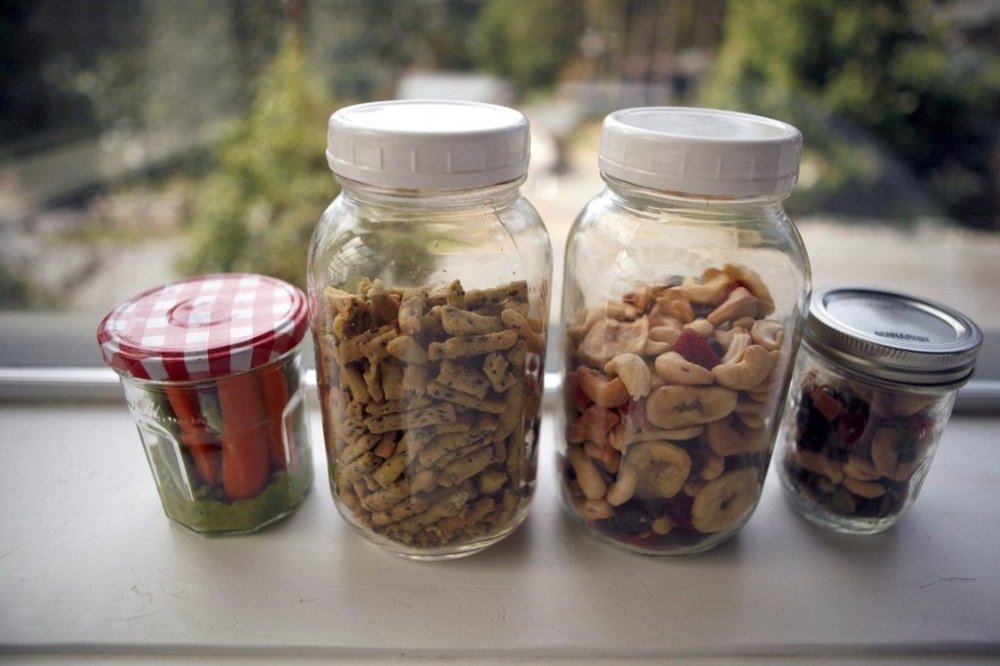Snacks take a bite out of meal time as consumers pivot to smaller portions
Advertisement
Read this article for free:
or
Already have an account? Log in here »
To continue reading, please subscribe:
Monthly Digital Subscription
$0 for the first 4 weeks*
- Enjoy unlimited reading on winnipegfreepress.com
- Read the E-Edition, our digital replica newspaper
- Access News Break, our award-winning app
- Play interactive puzzles
*No charge for 4 weeks then price increases to the regular rate of $19.00 plus GST every four weeks. Offer available to new and qualified returning subscribers only. Cancel any time.
Monthly Digital Subscription
$4.75/week*
- Enjoy unlimited reading on winnipegfreepress.com
- Read the E-Edition, our digital replica newspaper
- Access News Break, our award-winning app
- Play interactive puzzles
*Billed as $19 plus GST every four weeks. Cancel any time.
To continue reading, please subscribe:
Add Free Press access to your Brandon Sun subscription for only an additional
$1 for the first 4 weeks*
*Your next subscription payment will increase by $1.00 and you will be charged $16.99 plus GST for four weeks. After four weeks, your payment will increase to $23.99 plus GST every four weeks.
Read unlimited articles for free today:
or
Already have an account? Log in here »
After a long, exhausting day at work, sometimes the last thing you want to do is cook a big meal, not to mention deal with the cleanup afterward.
Instead, you might assemble an array of snacks on a plate — cheese, fruits, roasted nuts, popcorn and jerky — get settled on the couch, turn on the TV and call it a day.
Snacking has become the new meal for many Canadians, replacing sit-down lunches and dinners, as people increasingly seek out convenience on a budget. Food manufacturers, meanwhile, are keeping a close watch.

“Snackification” has become a prominent trend, said Jo-Ann McArthur, president of Nourish Food Marketing, referring to when consumers combine multiple snacks to make a meal.
“They are moving away from a sandwich to a bunch of different things altogether,” she said.
A 2025 Restaurants Canada report found about 65 per cent of Canadians said they replaced a traditional meal with a snack at least once a month, with younger demographics such as millennials and Gen Z more likely to do so.
A post-pandemic hybrid lifestyle is part of the reason for the shift, said Sally Lyons Wyatt, global executive vice-president and chief adviser for consumer goods and food service insights at Circana.
It’s easier to grab a snack while working from home than to spend time in the kitchen making a meal. Similarly, it’s cheaper to snack than buy a full meal when working at the office.
“The accessibility of snacks: it allows consumers to get whatever they want, whenever they want, for whatever occasion they want,” Wyatt said.
What qualifies as a snack has also changed, said Jenny Thompson, vice-president of market strategy and understanding at Ipsos Canada, which tracks consumer trends in food and beverage.
As some consumers pivot to eating smaller portions throughout the day, it has them wanting something beyond the core options of pretzels, chips and cookies.
“There’s an evolution towards incorporating what we would consider non-traditional snacks into the repertoire,” she said.
For example, people are calling a bowl of cereal or a slice of leftover pizza a snack, she said. Others might replace a meal with a protein shake and call it a snack.
There’s also the rising trend of the “better-for-you” or healthy snacks, such as those with fewer calories and higher nutritional value.
Early insights from a 2026 Ipsos report show healthy snacks represent the sweet spot between health and decadence, allowing consumers to satisfy their cravings while maintaining their wellness goals.
“It doesn’t quite hit the mark if it’s only convenient or tastes good,” Thompson said.
“It also needs to be clean (with) simple ingredients,” she said. “There’s a whole other host of emotional and functional needs that it needs to meet.”
The preference for healthier snacks and smaller portions is partially driven by weight-loss drugs such as Ozempic gaining prominence. For many users, these drugs are proving helpful in shedding weight by decreasing appetite and boosting feelings of fullness.
McArthur said many people using weight-loss drugs have become snackers as they look for smaller portions with the highest possible nutritional value.
“Basically, their meals have become snacks,” she said.
Meanwhile, changing consumer tastes have pushed many traditional manufacturers to explore new strategies.
Meat packaging company Maple Leaf Foods Inc. has launched on-the-go meat sticks called Mighty Protein to capture the wellness movement.
Canned soup company Campbell’s Co., which owns Goldfish crackers, Cape Cod chips and other brands, reported a slowdown in its snacks category in its most recent quarter as consumers pivot to healthier options.
Chief executive Mick J. Beekhuizen told analysts during a September conference call that Campbell’s knows “snacking behaviours are evolving” and that it’s working to add new flavours and attract customers drawn to health and wellness.
Some large-scale companies have been quick to pivot. Frito-Lays owner PepsiCo Inc. has become one of the leaders in the wellness snack space, both by acquiring smaller players and making healthier versions of its iconic products, such as Doritos and Cheetos.
Companies like PepsiCo are also pivoting to selling more multi-packs with smaller, single-serve options.
Wyatt said the move to make snacks more bite-sized isn’t motivated by shrinkflation but by what customers want: smaller portions and flavour variety. She said the trend is likely to stay.
A Statistics Canada report showed a resurgence of on-the-go snacks post-pandemic has pushed manufacturers to make smaller portion sizes. The agency also forecasts the snack industry to grow 6.4 per cent between 2023 and 2028.
“Snacking is never going to go away because consumers love the diversity, the variety, the choices,” Wyatt said.
This report by The Canadian Press was first published Nov. 23, 2025.

